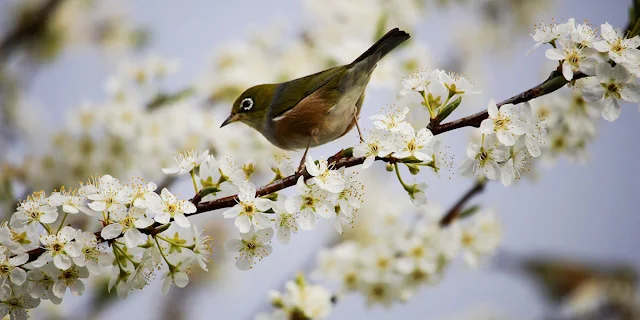This site is primarily reader-supported. Hence, this site participates in affiliate advertising programs, such as Amazon and Google AdSense, designed to provide a means for us to earn fees or commissions from qualifying purchases made through our links.
 |
| The Eco-Friendly Ways to Keep Your Garden Blooming |
Overview
Keeping your garden free from pests without relying on harsh
synthetic chemicals is not only better for your plants but also for your
health, your local wildlife, and the environment as a whole. Organic and natural pest control methods help maintain biodiversity and encourage a
thriving, self-sustaining garden ecosystem. If you're a home gardener looking
for effective, chemical-free solutions, here are some time-tested and
eco-conscious techniques to keep your garden flourishing:
1. Encourage Beneficial Insects
 |
| Encourage Beneficial Insects |
2. Use Homemade Natural Sprays
Sometimes, pests get out of hand and need a bit more direct
intervention. Homemade sprays can offer a safe and effective way to deter
insects without harming your plants or beneficial organisms. Common natural
options include:
- Neem oil spray: Neem oil disrupts insect growth and feeding.
- Garlic and chili spray: These strong-smelling mixtures repel a wide range of
insects.
- Dish
soap and water: A mild solution can help suffocate soft-bodied pests
like aphids and whiteflies.
Always test sprays on a small section of the plant first,
and avoid applying them during the hottest part of the day to prevent leaf
damage.
3. Companion Planting
One of the oldest tricks in the book, companion planting
involves placing certain plants near each other to repel pests naturally. For
example:
- Basil
repels mosquitoes and houseflies.
- Onions
and garlic deter aphids, slugs, and cabbage loopers.
- Marigolds
help control nematodes and deter beetles and whiteflies.
Strategically arranging these plants can create a natural
barrier that confuses or deters unwanted bugs.
4. Keep Your Garden Clean and Tidy
Pests love hiding in dark, moist areas created by fallen
leaves, overripe fruits, and decaying plant matter. Regularly removing dead
vegetation and keeping your garden bed neat discourages infestations by
eliminating common breeding grounds for insects and fungal diseases.
5. Rotate Crops Each Season
 |
| Rotate Crops Each Season |
6. Use Row Covers or Garden Nets
Lightweight mesh row covers can physically block insects
such as cabbage worms, flea beetles, and grasshoppers from getting to your
plants. These allow light, rain, and air to pass through while protecting your
crops during their most vulnerable growing stages.
7. Set Up Physical Barriers
Sometimes the best solution is a simple barrier. For
crawling pests like slugs, snails, and cutworms, surround your plants with
materials they avoid, such as:
- Copper
tape (gives slugs a mild electric shock)
- Crushed
eggshells or diatomaceous earth (harsh textures deter movement)
- Mulch
with cedar or pine needles, which also deters insects while conserving
soil moisture
8. Enrich and Maintain Healthy Soil
Healthy, nutrient-rich soil is the foundation of strong,
pest-resistant plants. Add compost, organic matter, and natural
fertilizers like worm castings or fish emulsion to improve soil structure
and nutrient availability. Healthy plants have stronger immune responses and
are less likely to fall victim to pest infestations.
9. Invite Natural Predators
 |
| Invite Natural Predators |
10. Practice Regular Monitoring
Prevention starts with observation. Spend time in your
garden checking the undersides of leaves, the base of stems, and soil surfaces.
Catching a problem early—like spotting aphid eggs or noticing irregular leaf
damage—can prevent a full-blown infestation. Handpicking pests, removing
infected leaves, or adjusting watering schedules can make a significant
difference.
Conclusion
A naturally pest-resistant garden doesn’t happen overnight.
It’s built through observation, diversity, and nurturing a healthy ecosystem.
By combining several of these strategies—encouraging predator insects, using
natural sprays, rotating crops, and maintaining soil health- you create a
garden that can defend itself with minimal intervention.
Remember, there are a few bugs here and there are a normal
part of gardening. The goal isn’t to eliminate every insect, but to achieve a balanced
ecosystem where pests are kept in check naturally.











